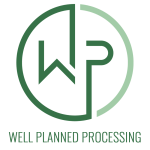
Homeschool Market Fundamentals
The people, priorities, and patterns behind the homeschool movement.
From the roots of homeschooling to the evolving ways families choose and pay for curriculum, Market Fundamentals provides a strong foundation for understanding this unique community.
Here, you’ll find reliable insights into the values, behaviors, and economic choices driving homeschool families. Each article offers context and clarity, helping you see the bigger picture behind the homeschool market and the steady patterns that shape it.
Think of this section as the demographics of the homeschool world—a practical guide to who these families are, what they value, and how they make decisions.
Featured Article
-
The Homeschool Market Explained: Who Families Are and Why They’re Different
Homeschooling didn’t begin as a trend—it began as a battle. In the 1970s and 1980s, parents in states like Tennessee risked fines and even jail time under truancy laws simply for teaching their children at home. Out of those struggles grew a tightly knit community built on trust, loyalty, and shared values. Understanding that history is essential for anyone hoping to connect with homeschool families today. What started as a fight for freedom has, within a generation, become one of the most distinctive and influential education markets in the country.
Latest Articles
-
The Origins of Homeschooling: From Legal Battles to a National Movement
The modern homeschool movement didn’t start in curriculum catalogs or online forums—it was born in living rooms, courtrooms, and community meetings. From the 1925 Supreme Court case that affirmed parental rights, to the 1980s battles where families faced truancy charges, homeschooling grew out of conviction, courage, and community. -
Why Homeschoolers Are Brand Loyal (and What That Means for Marketing)
Homeschool families don’t buy casually. Once a company proves it understands their values and meets their needs, loyalty often lasts for years—sometimes even generations. That loyalty makes trust the most valuable asset in the homeschool market. -
The Power of Word-of-Mouth in Homeschool Marketing
Homeschool families don’t just use products—they talk about them. A mom who finds the right planner or math curriculum will mention it at co-op, post about it online, and recommend it to her friends. That instinct to share makes word-of-mouth the single most powerful force in homeschool marketing. -
Educational Philosophies That Shape Homeschool Choices
Homeschooling isn’t just about choosing books—it’s about choosing a philosophy. Parents often anchor their decisions in a teaching method that reflects their values, worldview, and goals. Whether Charlotte Mason, Classical, Montessori, or another approach, these philosophies shape nearly every curriculum decision homeschool families make.

Meet Rebecca
Rebecca Farris has spent over two decades analyzing the homeschool market, helping curriculum publishers and education businesses understand the values and buying patterns that drive homeschool families.
Homeschool Market Insights
Quick takeaways shaping today’s homeschool families
Growth Trend
Homeschooling nearly doubled during the pandemic—and many families chose to stay. Today, 3-5% of U.S. students learn at home, making homeschooling one of the fastest-growing education choices.
Family Makeup
Homeschool families are often larger, averaging three or more children. This shapes curriculum needs, budgets, and teaching strategies as parents juggle multiple grade levels at once.
Need Market Insights?
Schedule a strategy call and discover how to position your business in the homeschool market.
Cost of Homeschooling
Families typically spend $700–$1,800 per child each year. Value, flexibility, and long-term affordability are critical—especially for households educating several children.
Why Families Choose It
Top reasons include safety concerns, dissatisfaction with academics, the desire for moral or faith-based instruction, and the freedom to personalize learning.











